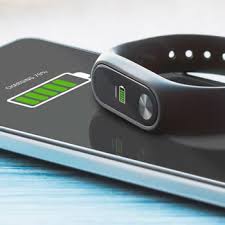Table of Contents
ToggleIntroduction
While NFC technology was originally designed for secure data transfer, it has since been adapted to support wireless charging. This new capability distinguishes it from the widely used Qi wireless induction charging standard. Both technologies offer wireless charging, but they cater to different applications and use cases.

Qi Wireless Charging
Qi wireless charging uses an induction coil to deliver up to 15W of power over a distance of approximately 4cm. This capability allows for rapid charging, making it suitable for mid-sized devices such as smartphones and tablets. Qi technology is ideal for devices that require higher power delivery over a relatively longer distance.
NFC Wireless Charging
In contrast, NFC Wireless Charging employs a much thinner antenna, with a surface area as small as 3mm, to transfer up to 1W of power over a certified compliant range of 5mm. This makes NFC Wireless Charging perfect for compact personal and wearable devices like wireless earbuds, smartwatches, digital styluses, headsets, and fitness trackers.
Unique Use Cases for NFC Wireless Charging
NFC-enabled devices can also function as reverse-wireless chargers. For instance, a user can place their NFC-equipped headphones on the back of an NFC-enabled smartphone, enabling power transfer from the phone to the headphones. This feature is particularly advantageous for charging small devices on the go.
Future Potential and Developments
The NFC Forum is actively working to increase the power delivery capability of NFC Wireless Charging to 3W. This enhancement will significantly broaden the technology’s use cases, making it more versatile and applicable to a wider range of devices.
Conclusion
NFC and Qi technologies both offer wireless charging solutions but serve different purposes. Qi is better suited for higher power delivery and larger devices, while NFC excels in compact, low-power applications. The ongoing improvement of NFC Wireless Charging capabilities promises to expand its use, making it a vital technology for a variety of future applications.
